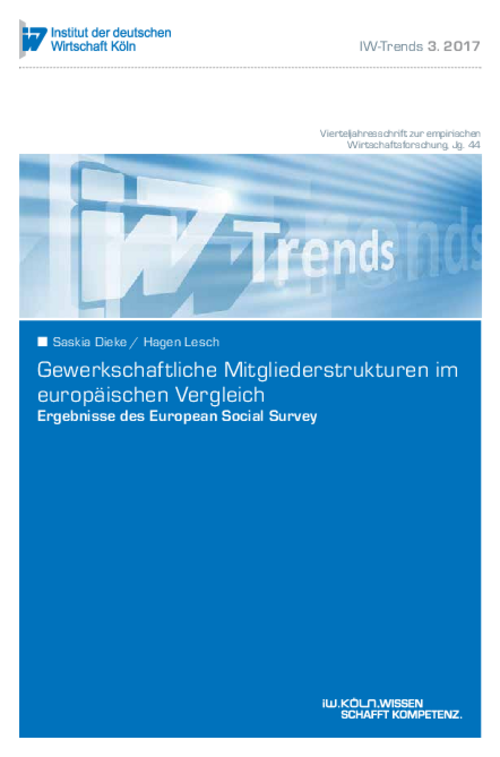An analysis of data from the European Social Survey for 16 European countries shows that the degree of trade union organization currently ranges between just under 5 per cent in Hungary and 69.1 percent in Denmark.

A European Comparison of Trade Union Membership Structures: Results from the European Social Survey
IW-Trends

An analysis of data from the European Social Survey for 16 European countries shows that the degree of trade union organization currently ranges between just under 5 per cent in Hungary and 69.1 percent in Denmark.
At 15.6 percent Germany is in the midrange, behind the United Kingdom (20.6 percent) but ahead of France (7.3 percent). Regardless of these different levels, trade unions in all countries surveyed face the same structural challenges. They need to recruit more young workers, organize so-called "atypical" employees, such as part-time workers and temporary workers, and gain readier access to smaller businesses. One particular problem is that 16- to 30-year-olds are underrepresented among union members. Unless they can sign up more younger workers, unions will continue to see declining membership for the next few years.

Saskia Dieke / Hagen Lesch: Gewerkschaftliche Mitgliederstrukturen im europäischen Vergleich
IW-Trends

More on the topic
![[Translate to English:] Das Gebäude des Weißen Hauses in Washington, D.C. in den Vereinigten Staaten von Amerika. [Translate to English:] Das Gebäude des Weißen Hauses in Washington, D.C. in den Vereinigten Staaten von Amerika.](/fileadmin/_processed_/c/1/csm_GettyImages-2161499385_White_House_Editorial_884306add8.jpg)
Trump or Harris or ...? What Europe must prepare for
A few months before the presidential election in the USA, Donald Trump has a good chance of being re-elected. On the Democratic side, the incumbent president has withdrawn his candidacy after a long period of hesitation, while Vice President Kamala Harris is ...
IW
Compendium 5.5: CO2 Regulation of Road Transport in Europe
With the Compendium CO2 Regulation in Europe, the IW has been providing the interested public with a comprehensive collection of data on the development of CO2 emissions from passenger car traffic in the European Union, as well as on the applicable regulatory ...
IW